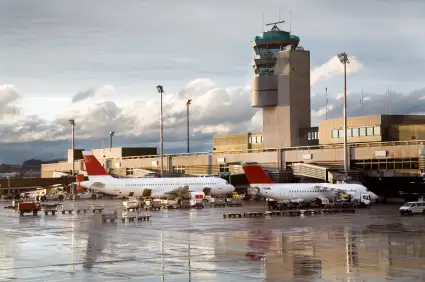
According to the newly released 2012 Safety Ranking from Europe’s Jet Airliner Crash Data Evaluation Centre (JACDEC), Finnair is the world’s safest major airline, with a safety index of 0.005. The top-ranking U.S. airline, Southwest, is in 21st place, with an index of 0.019.
The indexes, which were calculated by JADEC, a German-based center for aviation center information, were computed using 30-year historical statistics about fatalities, hull losses, serious accidents, and other safety benchmarks. You can take a look at either an English-language summary or a full table in German.
There is no reason to doubt the number crunching. But the big question is whether these safety index numbers are of any use to travelers in choosing an airline. Do they accurately predict the likelihood of a crash or serious accident on any future flight? The answer seems to be no. Just about all the airline safety experts agree with this basic conclusion: No historical data can predict which airline or which airliner will suffer the next significant crash; that’s because of the way developed countries oversee aircraft manufacturing and airline operations.
Safety is a primary concern in both design and operation of airliners. The cause of each accident is determined afterwards, and whatever the problem, it gets solved before it can happen again. As a result, each major new accident is almost always due to some new and unexpected problem.
Over the last 30 years, the main common thread linking more than one major accident is poor communication between aircraft and ground control. For several reasons, air traffic control is conducted in English almost everywhere in the world, and misunderstandings or lack of clarity between crew and control tower apparently caused or contributed to several major crashes. Beyond that, crashes are generally one-off occurrences and inherently unpredictable from historical data.
The only time you have to worry is when an airline or airplane is under investigation by a safety agency. And, in those cases, airlines either clean up their problem quickly, or the agency shuts down the offending airline until it improves. Take the current Boeing 787 situation as an illustration. The plane has exhibited some problems; as a result, the FAA is undertaking a comprehensive review. Although the airplane is undoubtedly safe to fly, you would encounter a slightly higher risk of delay on a 787 flight than on another airplane. But whatever the risk, it’s tied to the airplane, not the airline that flies it.
So use the safety index numbers however you choose. But don’t figure you’ll be safer with a low-index airline on your next trip.
You Might Also Like:
We hand-pick everything we recommend and select items through testing and reviews. Some products are sent to us free of charge with no incentive to offer a favorable review. We offer our unbiased opinions and do not accept compensation to review products. All items are in stock and prices are accurate at the time of publication. If you buy something through our links, we may earn a commission.
Related
Top Fares From
Today's Top Travel Deals
Brought to you by ShermansTravel
Japan: 10-Night Kanazawa Tour, Incl. Kenrokuen...
smarTours - JNTO
 vacation
$4320+
vacation
$4320+
London to Reykjavik: Luxe, 10-Night Northern...
Regent Seven Seas Cruises
 cruise
$8175+
cruise
$8175+
Ohio: Daily Car Rentals from Cincinnati
85OFF.com
 Car Rental
$19+
Car Rental
$19+



